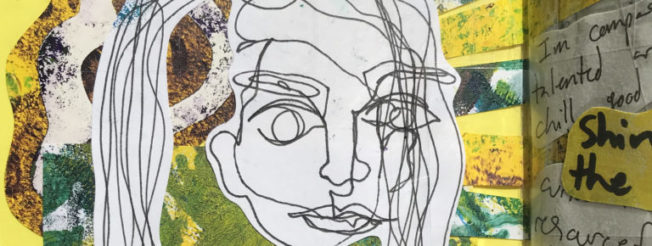attentiveness & community
- Attentiveness
- Community
- Application to Art

Attentiveness & community
Paying attention is something that is actually easy to not do. It’s easy to get caught up in your own head. But, the world and the communities that exist in it can be beautiful and inspiring if we do pay attention to them.
attentiveness
To pay attention to the world and its communities of course involves listening to others when they have something so say or watching what others do so that we can learn from them. Listening allows us to hear what others have to say and try to understand or learn from it. You can learn about another person and how they are different or similar to you, and then you can become closer to that person and create relationships to grow from. And getting to know new people can also help us encounter those differences that we don’t understand and try to understand them to that we can maybe bridge those gaps between ourselves and strangers, instead creating communities that people can thrive in through those connections. Watching can be just as important in paying attention as listening such as in demonstrations of tasks to learn something new or watching someone’s body language to try to understand how they feel, if they are okay, if they could be a friend, or if they should be avoided. And in watching you can see things you haven’t noticed before that could inspire you to do something new yourself or that could wake you up to something that may need to change. Paying attention also leads to the need to speak, to ask questions for clarity or to learn more, or to voice your understanding so that others can assess if you understand them or if you need more time. Or, you can use art as a voice to speak about things you notice while paying attention.

community
These elements of paying attention are vital to a community because to have a community we need to interact with those around us. That means you shouldn’t just watch from the windows but actually go outside and talk to people, talk about yourself, interview people, collaborate, etc. This is because a community involves relationships and socializing with others and being involved in the community to maintain those relationships and even improve them or improve life for the community. And, to maintain a community you need to be attentive to that community, observe how it functions, and observe and interact with the people in it to understand what the community needs in order to thrive. This is the case with any one-on-one relationship too. And, from that interaction comes communication and team work that can empower the community to be the best it can be.
Sometimes, improving the community means major changes, as we all change as we age in order to grow and mature and be healthy individuals. Those changes require paying attention to the community and society and the world and how everything works in order to diagnose what specific change the community needs. From that point of paying attention the community needs individuals to voice their thoughts and communicate with each other to work out the plan for that change to benefit the community. Sometimes you need to voice thoughts for others who can’t, which will require even more paying attention to make sure you are voicing their thoughts correctly.

Application to art
All of that paying attention and community can be done in the art classroom, or benefitted by art-making. Students can document what they see, hear, or learn about their communities, which can be done using art by the use of visual journals, or illustrations and sketches of places and parts or people of the community. Students can make art expressing their identity in relation to the community and what they noticed about it. Students can also take their documentation and learnings about the community and make that into other art that could even try to communicate a needed change in the community or a proposed new idea to benefit the community. Or, students could make art as a method of communication to direct individuals in their community such as in hand-made gifts or artsy messages like thank you’s. Students can study art from the community and how it affects or is affected by the community. That art can teach students about different places and cultures too, since different places means different communities and cultures which means different art based on local traditions. Even just making art for fun with others in the community can be a great way to bring the community together to be more friendly and welcoming to the relationships that make up a community and a home.
Related Reading Recommendations
- London, P. (1994). Step outside: Community-based art education. ERIC.
- Lai, A., & Ball, E. L. (2002). Home is where the art is: Exploring the places people live through art education (Links to an external site.). Studies in Art Education, 44(1), 47-66.

